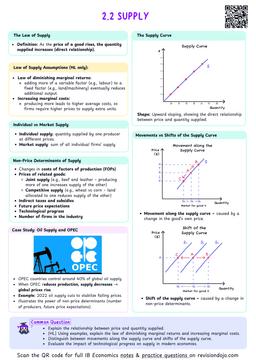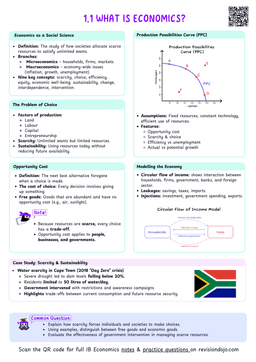Apart from taxes, there are many other policies that can be used to reduce poverty, and income and wealth inequalities, including:
- Policies to reduce inequalities of opportunities / investment in human capital.
- Transfer payments.
- Targeted spending on goods and services.
- Universal basic income.
- Policies to reduce discrimination.
- Minimum wages.
Policies to reduce inequalities of opportunities / investment in human capital
- In most poor countries, the access to essential services such as education, healthcare, differs greatly between the rich and the poor.
- Therefore to eliminate this inequality in opportunity, the government can invest in human capital, and provide such services free of charge to the poor.
- This way, low-income households can expand their skills and qualifications to:
- Be able to get better jobs in future.
- Be able to maintain their health.
- Provide better living standards for their kids, closing the cycle of poverty.
Advantages
- Enhanced social mobility: free access to education and healthcare enables low-income households to improve their skills and qualifications, leading to better job opportunities and reduced income inequality.
- Breaking the cycle of poverty: improved living standards for children, including better health and education, allow future generations to escape poverty more effectively.
- Long-term economic growth: investing in human capital increases the productivity and efficiency of the workforce, driving economic growth over time.
Disadvantages
- High costs for governments: providing free education and healthcare requires substantial public funding, which may strain government budgets, especially in poorer countries.
- Risk of inefficiency: poorly implemented policies may lead to resource wastage, corruption, or mismanagement, reducing the effectiveness of these measures.
- Dependence on government support: relying on free services may discourage self-sufficiency, with individuals or families expecting continued government aid without seeking personal development.
The National Health Service (NHS) in the UK provides free healthcare at the point of use, reducing inequalities in access to medical services.
Transfer payments
Transfer payments
Transfer payments are redistributions of income by the government to individuals or households without any exchange of goods or services.
Transfer payments can include:
- Unemployment benefits: financial assistance for individuals who are temporarily out of work.
- Pensions: payments to retired individuals to ensure a basic standard of living.
- Child allowances: financial support for families with children to cover expenses like food, clothing, and education.
- Disability benefits: assistance for individuals with disabilities to help cover their living costs.
Advantages
- Support for vulnerable groups: transfer payments provide a safety net for individuals facing unemployment, retirement, or disabilities, ensuring a basic standard of living.
- Reduction of poverty: these payments help low-income households meet essential needs like food, housing, and education, reducing overall poverty levels.
- Promotion of social stability: by addressing income disparities, transfer payments help reduce social tensions and promote stability within a society.
Disadvantages
- High government costs: financing transfer payments requires substantial public spending, often funded by higher taxes or government borrowing.
- Risk of dependency: recipients may become reliant on transfer payments, reducing motivation to seek employment or improve skills.
- Inefficient targeting: poorly designed systems may direct benefits to individuals who do not need them, while failing to adequately support those in genuine need.
The Supplemental Nutrition Assistance Program (SNAP) in the United States provides low-income families with funds to purchase food, helping to reduce food insecurity and improve health outcomes.
Targeted government spending on goods and services
- Governments often spend part of their government revenue for the provision of merit goods, such as:
- Education.
- Healthcare.
- Physical capital (clean drinking water, infrastructure etc.).
- Governments provide these goods since they tend to be unaccessible for low income households.
- Hence, by providing such goods, the government can reduce the inequality in the access to essential goods and services, reducing poverty.
Advantages
- Reduces poverty: direct government provision ensures that low-income households have access to essential goods and services, improving social mobility.


